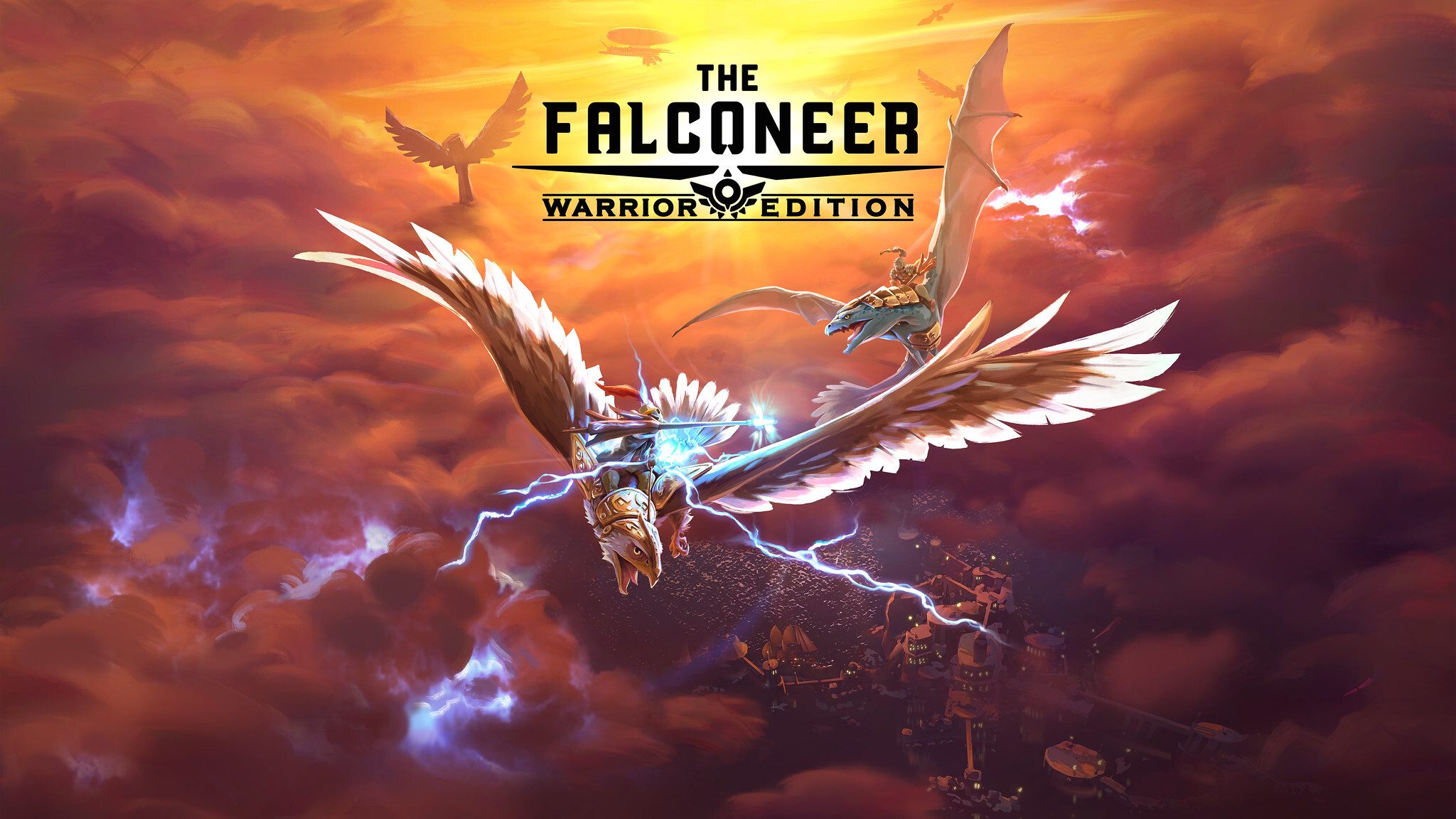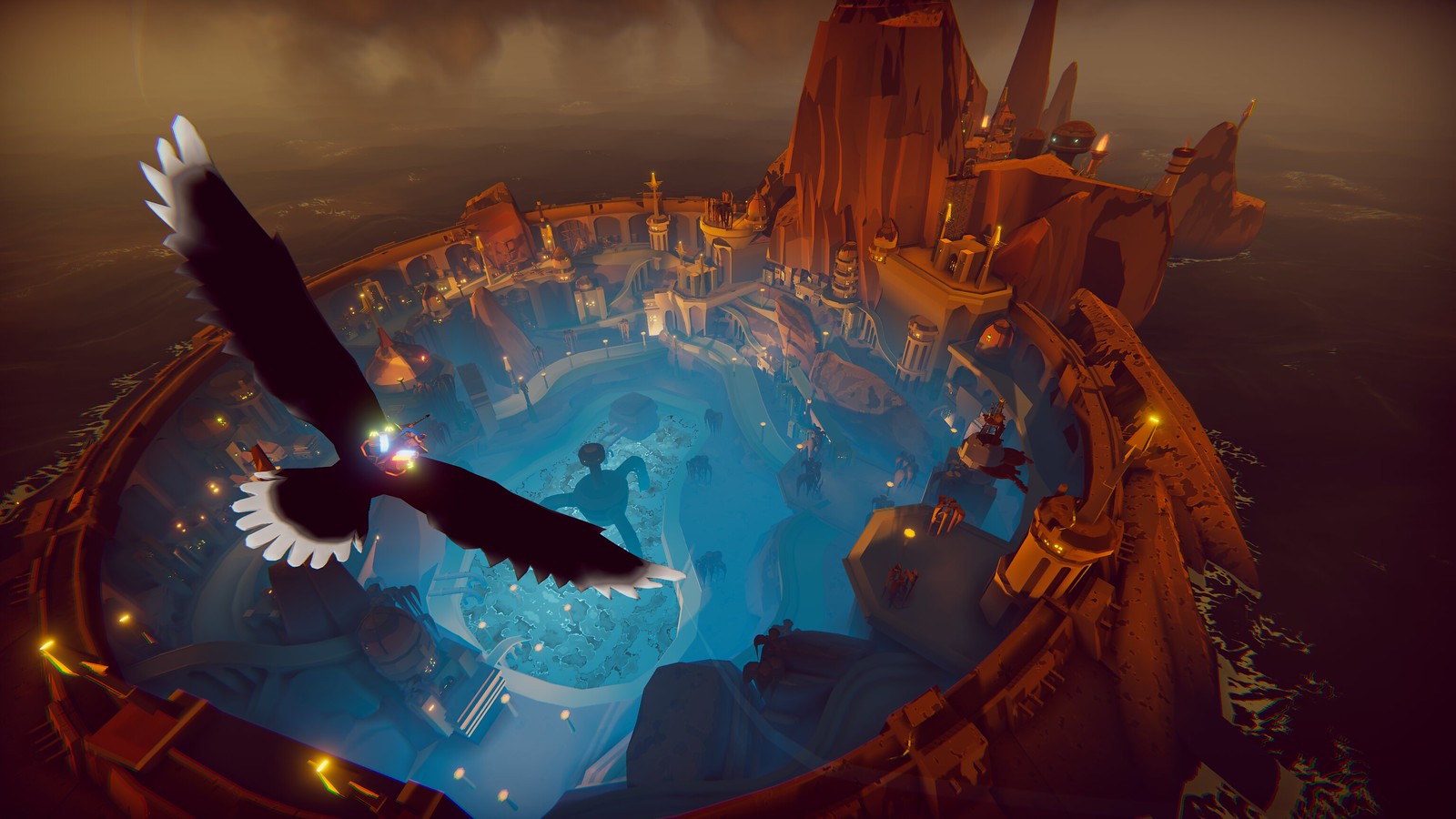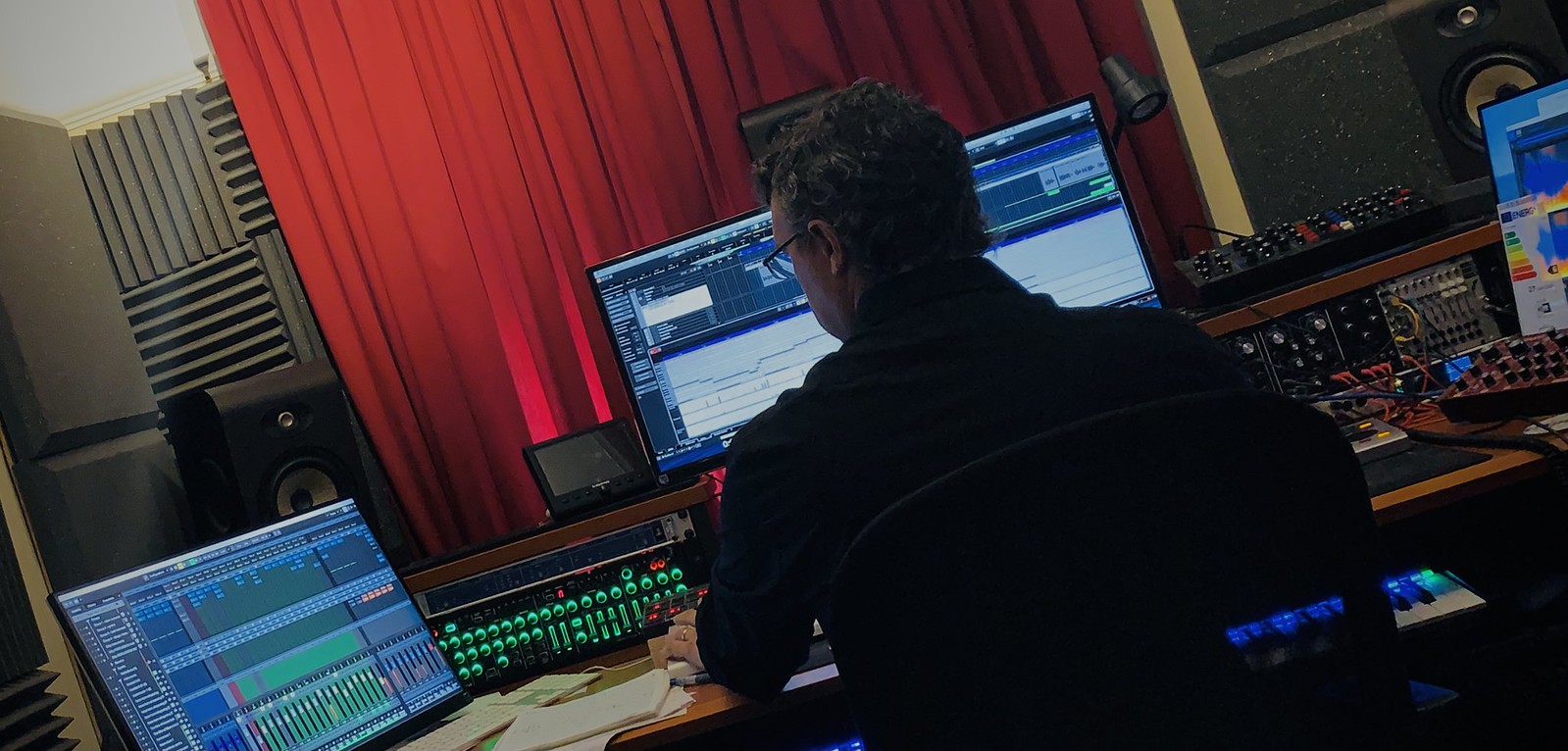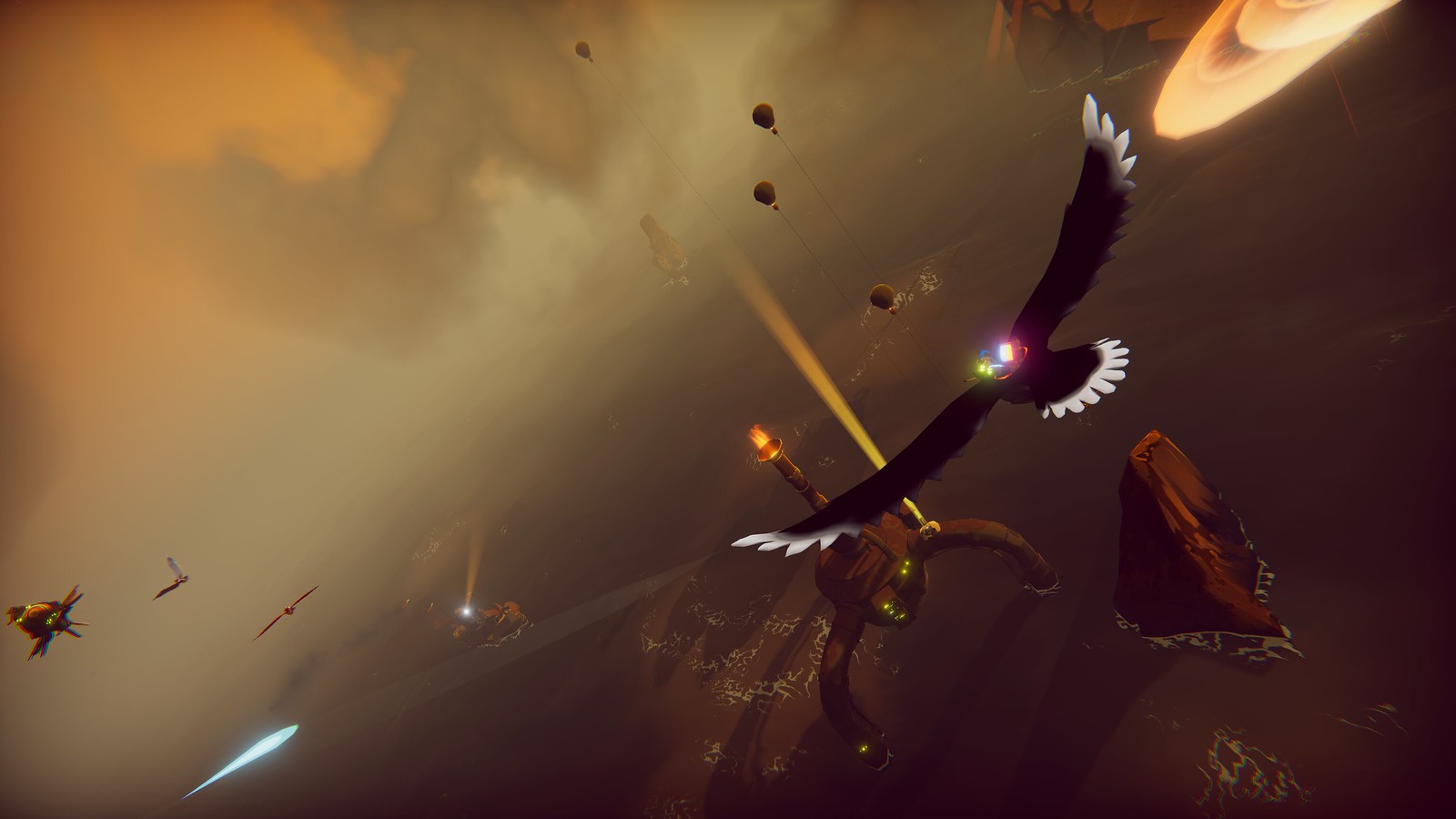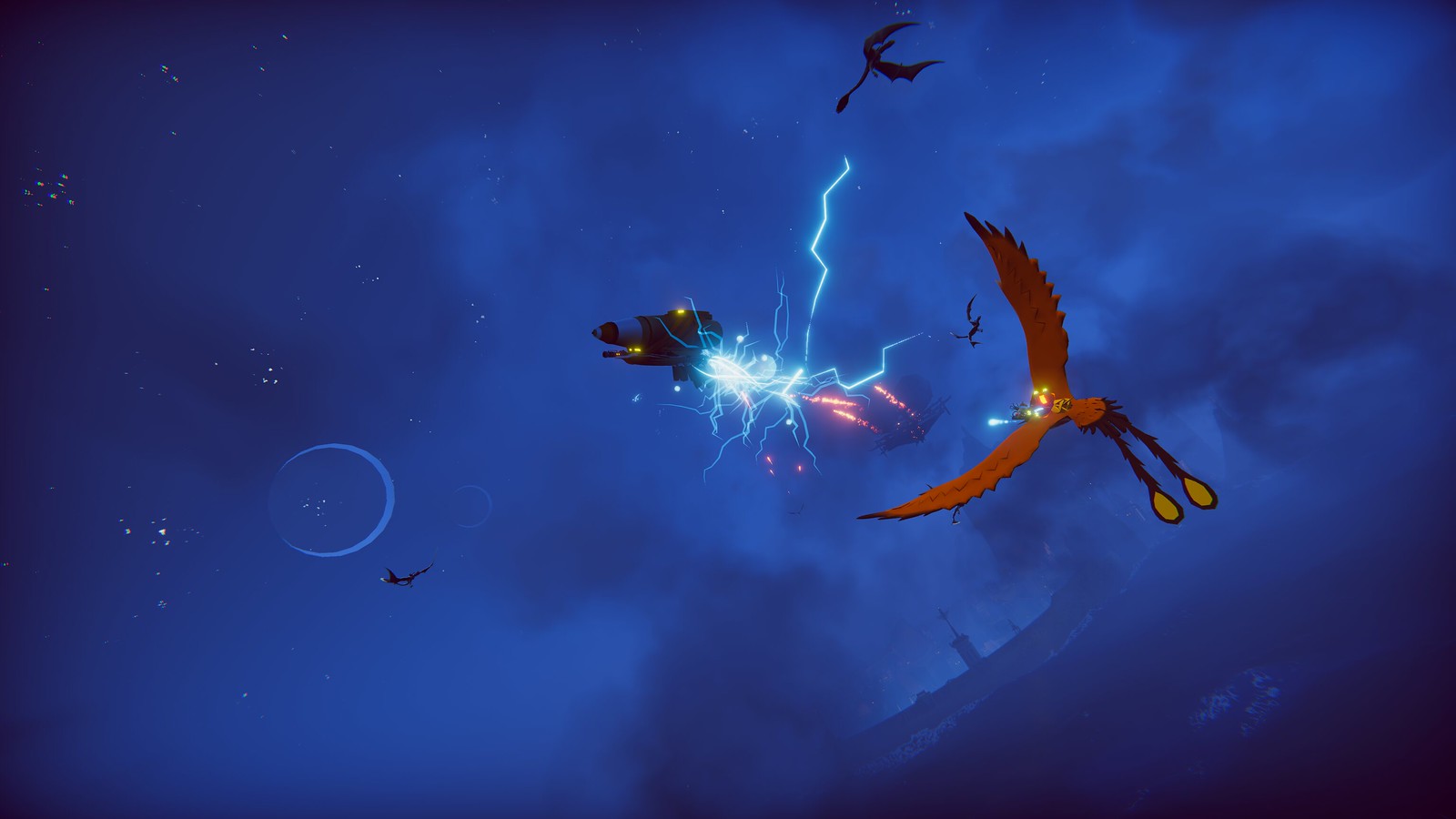Hi everyone, I’m Benedict Nichols, the composer and sound designer for the third-person aerial combat game, The Falconeer, which is coming to PlayStation 5, and PlayStation 4 on August 5. I’ve worked with the game’s solo developer, Tomas Sala, for almost two years, helping to bring his vision for the game to life. It’s been an incredible privilege to work on such a unique game, and it’s a pleasure to share a little insight into how I used music to bring the world of The Falconeer to life here with you today.
Tomas knew that he wanted deep Mongolian singing to be the sound of the Ursee (the ocean-based world of The Falconeer), and so, as the waters provide a stark reminder of death below, it provides the bed for nearly all the music and ambiences. After receiving the liberating guideline of “be bold and unique”, my creativity ran wild!
I felt music needed to do more than just accompany the player’s journey, so I set about the ambitious task of creating an entire sonic world that not only represented the game and it’s various factions in the ‘present day’, but also immersed the player with a sense of history, creed, musical development, and the emotional journey the people of the Ursee have experienced.
Every location in The Falconeer has its own unique suite of music, written with guidelines for each faction, that varies depending upon your relationship with those people (friendly, neutral or hostile). Further thought was given to the physical position of locations. For example, Mawbridge, being right in the centre of the map, draws on influences from various faction locations around it as it’s a pinch point for travelling sailors, who would bring their cultural heritage with them. This pseudo-anthropological approach results in a much more immersive experience for the player, for if they fly from one side of the map to the other, they will experience shifts in the music and ambience that relays information about everything below, This becomes essential for establishing a ‘believable’, engrossing world that is much more than just a stunning visual backdrop to the good old classic dogfighting!
Below are the guidelines I established for the various factions. These were integral to establishing the believable, immersive game world that the player inhabits. I tried to find unusual ways of using and combining instruments that would feel unique to the world while still resonating with the player:
Civilians
Struggling for survival amongst the warring factions, their independence is characterized by solo string and woodwind instruments. Their melodies are somewhat remorseful of their history, but at locations like Saladmount, there is still a bit of grit in them. Meanwhile locations like Sacred Steps feature ‘religious’ chanting, as the monks perform their rituals within, which informs the player of the sort of people they are approaching.
Imperium
Strong and imposing, the rhythm of their machinery runs through the blood of its workers. There’s a sense of them stamping their mark everywhere they go with heavy drums (often emphasising beats 1, 2 and 3) and metallic hits, while combinations of brass (including some non-idiomatic flugal horn playing), bagpipes, cimbalom, bazantar, and synths boldly proclaim their presence.
Listen to the track ‘Cleftspire’ here – Cleftspire is the home of great ship builders, their strong melodies call out their challenge over strong percussion and grunting chants.
The Mancer Order
A technological cult who guard history’s mysteries, their music is made of an eclectic collection of instruments. I was looking for a sound that could define their religious zeal and depth of purpose in the way a deep church bell can, but without being metallic (as bells represent a sense of freedom in the game) and settled on a heavily detuned sitar, as if they were hung and struck in the towers of Stargazer.
The Freebooters
With this faction I represented the fusing of technology with nature, resulting in combinations of effected didgeridoo, more intense Mongolian singing (as they reside below the surface) and characteristic synths and orchestral forces.
Pirates
Guitars, cimbalom, massive drums, strong strings, deep throaty chanting (by myself) and some non-idiomatic saz (also by me!) characterise these pesky hordes. The changing compound time signatures reflect their rolling over the waves.
While writing the location music, a balance was needed to make it feel somewhat semi-diegetic. I needed to be careful that there wasn’t too much detail in the music, but with each faction’s battle music, that all changes. It’s job is to rip the player out of the serene beauty of gliding around a stunning world and thrust them into instant, visceral battle. It pushes the player forward as well as being informative, full of little musical details to reduce tedium.
Listen to the track ‘Pesky Marauders’ here – It establishes the Pirates’ sonic signature in the world early in the game as they launch a surprise attack.
I hope this has given you some insight into my approach and why music is so important to creating the sense of a living world in The Falconeer. Having a ‘worldly’ reason for every musical choice and nuance gives the music more authenticity, and I hope has resulted in a much deeper, immersive experience for players.
PlayStation.Blog
Source link
Related Post:
- Immersing players into the world of The Falconeer using the power of the PS5 – PlayStation.Blog
- Game Informer’s Top Scoring Reviews Of 2024
- The Falconeer: Edge of the World DLC Soars to Xbox One, Xbox Series X|S, and Windows PC Today
- PlayStation Indies promotion returns to PlayStation Store – PlayStation.Blog
- PlayStation Showcase 2024 Broadcast next Thursday – PlayStation.Blog
- Official PlayStation Podcast Episode 398: Retro Future – PlayStation.Blog
- Days of Play comes to PlayStation Store – PlayStation.Blog
- PlayStation Plus games for June: Operation: Tango, Virtua Fighter 5 Ultimate Showdown, Star Wars: Squadrons – PlayStation.Blog
- Introducing the Evo Community Series’ PlayStation 4 Tournaments – PlayStation.Blog
- What’s Next for PlayStation Studios – PlayStation.Blog
